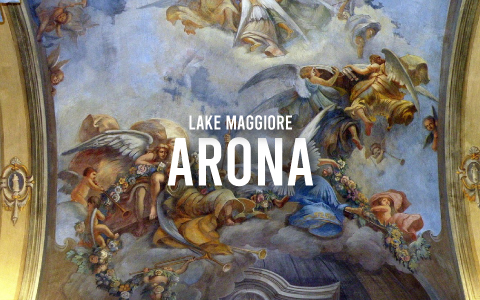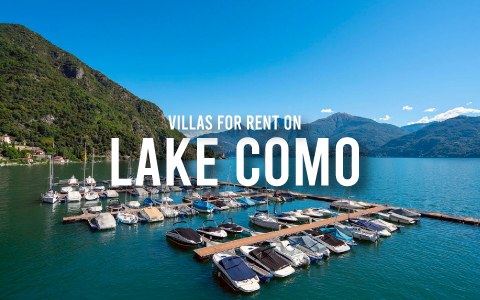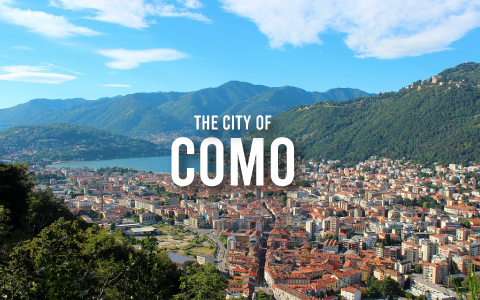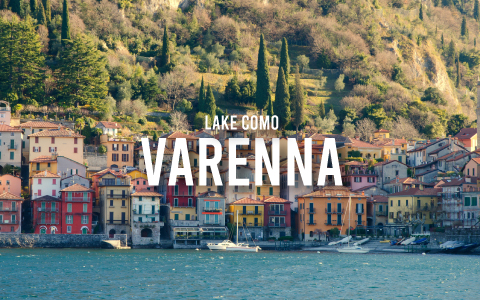
Arona, The Town Of Carlo Borromeo On The Shores Of Lake Maggiore
Lake Maggiore, in Northern Italy, is a destination that offers you an interesting blend of natural beauty and cultural charm. Stretching across the regions of Piedmont and Lombardy and even dipping into Switzerland, this lake is an ideal escape both in summer and in winter. In winter, the nearby mountains offer exceptional skiing opportunities, just a short drive away, while in summer is the perfect moment for exploring the famous Borromean Islands or lovely towns, such as elegant Stresa, the vibrant medieval Cannobio, Baveno, or the peaceful Arona.
The latter lies on the southwestern shores of Lake Maggiore, just an hour’s drive from Milan, a position that makes it a popular choice for those looking to escape the hustle and bustle of the city.
Arona and Carlo Borromeo
The history of Arona stretches back to Roman times, but it flourished in the medieval era as a center of trade and religion, while its later association with Carlo Borromeo, Saint Charles Borromeo, a significant figure in Catholic history, cemented its cultural importance.
Carlo Borromeo was born in Arona in 1538 to a noble family, became cardinal at only 22 and archbishop of Milan at 26. He was one of the main protagonists of the Counter-Reformation, the renewal movement of the Catholic Church in response to the Protestant Reformation. He actively participated in the Council of Trent, implemented a reform of the clergy, Founded numerous hospitals, orphanages and schools, and supported the art and culture of his time. For all this, he was canonized in 1610, becoming the patron saint of Milan and many other cities in Italy.
A Day in Arona: What to See and Do
Today, Arona retains a delightful mix of modern amenities and historical charm. Indeed, despite its relatively small size, the town is packed with fascinating sights and activities. Here are our favorite ones.
1. The Colossus of San Carlo Borromeo
No trip to Arona is complete without visiting the iconic statue of St. Charles Borromeo, known locally as “Sancarlone.” This imposing bronze monument built in 1698 is over 35 meters (115 feet) tall. It is the tallest statue in Italy and until 1886 was the tallest in the world, when it was surpassed by the Statue of Liberty in New York.
Best of all, you can go inside the statue and climb to the top to enjoy a panoramic view of Lake Maggiore and the surrounding hills.
2. Arona’s Old Town
Wandering through Arona’s historic center is like stepping back in time. The narrow, cobblestone streets are lined with centuries-old buildings, charming boutiques, and inviting cafes. Highlights include Piazza del Popolo, a lively square where locals and visitors alike gather to soak in the vibrant atmosphere.
3. La Collegiata di Santa Maria
Located in the heart of the city, it is a Gothic-Byzantine style church with a rich and fascinating history. Its origins date back to the 15th century, but in the 17th century it underwent major restoration and expansion.
The architecture is majestic both outside and inside, where you can admire a three-aisled structure with cross vaults and octagonal pillars. Various works of art adorn the interior.
4. Lungolago Marconi
Arona’s lakeside promenade, Lungolago Marconi, is perfect for a leisurely stroll. Lined with cafes, gelaterias, and small shops, it’s a wonderful place to relax and enjoy the serene views of Lake Maggiore. The promenade also features several charming sculptures and flower-filled gardens, making it a picturesque spot for photography.
5. Sacro Monte di San Carlo
Like the Sacred Mount Of Ossuccio, on Lake Como, the Sacred Mount of San Carlo is a UNESCO World Heritage religious complex consisting of a series of chapels that tell the life of St. Charles Borromeo.
Its construction began shortly after the beatification of St. Charles Borromeo but due to various difficulties, the project was never fully completed. Today, you can visit the chapels that were actually completed, a majestic church dedicated to St. Charles that houses some relics, and the aforementioned Colossus of St. Charles. Sculptures, frescoes, and the fantastic view of the lake embellish every corner.
6. Rocca di Arona
Perched on a hill overlooking the town, the Rocca di Arona is a historic fortress that dates back to the medieval era. Although it is largely in ruins today, the site offers stunning views of the lake and the surrounding landscape. It’s also a peaceful spot for a picnic or a quiet moment of reflection. History buffs will appreciate its significance as the birthplace of Saint Charles Borromeo.
What to Do while in Town
Arona is known for its lively markets, which take place every Tuesday along the lakeshore. Here, you can find everything from fresh produce and local delicacies to handmade crafts and clothing. It’s a great opportunity to mingle with the locals and pick up a unique souvenir to remember your trip.
The town is also a great starting point for boat tours and excursions. It’s easy to hop on a ferry or book a private boatto explore the Borromean Islands, lake villages and other parts of Lake Maggiore. These excursions provide a different perspective of the lake and allow you to fully appreciate its natural beauty.
Certainly, during a trip to Arona you cannot fail to taste the local cuisine. The surrounding area is rich in excellent products, such as lake fish, cheeses or wines. Among the typical dishes to taste we recommend perch risotto, polenta concia (polenta, cheese and melted butter), brasato al Barolo (beef braised in Barolo wine), missoltini (smoked anchovies) and apple fritters. And as you finish your mean by sipping an espresso or watching the sun set over the Alps, you’ll understand why so many visitors fall in love with this charming town.



